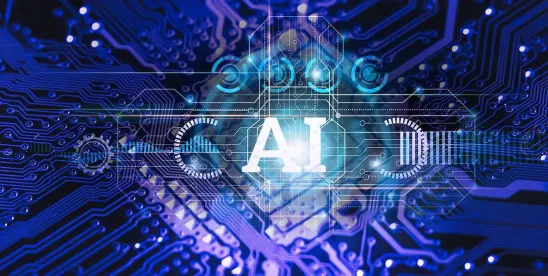In the midst of the multiple executive orders issued in the first days of the Trump administration, on 23 January 2025, the White House issued an executive order entitled Removing Barriers to American Leadership in Artificial Intelligence (AI EO). At a high-level, President Trump issued the AI EO to (1) implement the revocation of President Biden’s executive order on artificial intelligence (AI), entitled the Safe, Secure, and Trustworthy Development and Use of Artificial Intelligence (EO 14110) and (2) create President Trump’s AI action plan to ensure that AI systems are “free from ideological bias or engineered social agendas.” As a result of the AI EO, the Equal Employment Opportunity Commission (EEOC) and Department of Labor (DOL) pulled or updated a number of AI-related publications and other documents from their websites. This alert provides an overview of the AI EO as well as the changes to guidance from the EEOC and DOL. It also outlines best practices for employers to ensure compliance at both the federal and state levels.
Revocation of President Biden’s EO 14110
Similar to the White House’s executive order entitled Protecting Civil Rights and Expanding Individual Opportunity (DEI EO)1 issued on 21 January 2025, the AI EO implemented the revocation of an executive order on the same subject issued during the Biden administration, EO 14110. EO 14110 required the implementation of safeguards (i) for the development of AI and (ii) to ensure AI policies were consistent with the advancement of “equity and civil rights.” EO 14110 also directed agencies to develop plans, policies, and guidance on AI, which they did before the end of 2024.
In connection with rescinding EO 14110, the White House issued a fact sheet and asserted that EO 14110 “hinder[ed] AI innovation and impose[d] onerous and unnecessary government control over the development of AI”. It directed executive departments and agencies to revise or rescind all actions, including policies, directives, regulations, and orders, taken under EO 14110 that are inconsistent with the AI EO. Further, the AI EO mandates that the director of the Office of Management and Budget (OMB) revise OMB Memoranda M-24-10 and M-24-18 (which address the federal government’s acquisition and governance of AI) within 60 days. To the extent that an action cannot be immediately suspended, revised, or rescinded, then the AI EO authorizes agencies to allow exemptions until the actions may be suspended, revised, or rescinded.
AI Action Plan
As part of its stated goal to “enhance America’s global AI dominance in order to promote human flourishing, economic competitiveness, and national security,” the AI EO directs the assistant to the president for science and technology, the special advisor for AI and crypto, and the assistant to the president for national security affairs to develop an AI action plan within 180 days. Such AI action plan will be developed in coordination with the assistant to the president for economic policy, the assistant to the president for domestic policy, the director of the OMB, and any relevant heads of executive departments and agencies.
Updates to Existing Federal Agency Guidance on AI
Dovetailing with the AI EO, on 27 January 2025, the EEOC removed AI-related guidance2 from its website. This guidance, published in May 2023, addressed how existing federal anti-discrimination law may apply to employers’ use of AI when hiring, firing, or promoting employees.
Similarly, the DOL noted on its website that the “AI & Inclusive Hiring Framework"3 published in September 2024 by the Partnership on Employment & Accessible Technology, and the DOL’s October 2024 “Artificial Intelligence Best Practices”4 guidance may now be outdated or not reflective of current policies. Both publications are also unavailable in certain locations in which they were previously accessible.
While the DOL and the EEOC updated and removed their AI-related guidance respectively, the Office of Federal Contract Compliance (OFCCP) website still maintains its 29 April 2024 nonbinding guidance on how federal contractors and subcontractors should use AI to ensure compliance with existing equal employment opportunity obligations under federal law.5
Best Practices for Employers
As with any change to executive branch and federal agency guidance, employers should continue to monitor developments that may impact AI-related policies. Further, employers should review current AI policies for compliance with the recent executive branch equal employment guidance related to diversity, equity, and inclusion.6 While guidance and enforcement priorities at the federal level have changed, employers must still comply with the various state-level regulations on AI, as many states have passed regulations addressing the use of AI in employment decisions.7 For example, in 2019, Illinois enacted the Artificial Intelligence Video Interview Act, whereby employers who use AI to analyze video interviews must provide notice to the candidate, obtain their consent, and provide an explanation of the AI technology used. Illinois also amended the Illinois Human Rights Act8 to prohibit discrimination by employers who utilize AI in recruitment, hiring, promotion, professional development, and other employment decisions. More recently, in 2024, Colorado enacted a law in 2024 that prohibits algorithmic discrimination in “consequential decisions,” which is defined to include those related to employment or employment opportunity.9 Moreover, with this shift in guidance at the federal level, employers should anticipate increased state and local regulation of AI in employment.10
Conclusion
There are likely to be many more developments in the coming days and weeks. Our Labor, Employment, and Workplace Safety practice regularly counsels clients on the issues discussed above and is well-positioned to provide guidance and assistance to clients on these significant developments.
Ninamarie C. Moore also contributed to this article.
Footnotes
1 See K&L Gates LLP Legal Alert, Uncharted Waters: Employers Brace for Significant and Unprecedented Changes to Employment Law Enforcement Under New Administration, January 24, 2025, https://www.klgates.com/Uncharted-Waters-Employers-Brace-for-Significant-and-Unprecedented-Changes-to-Employment-Law-Enforcement-Under-New-Administration-1-24-2025.
2 See K&L Gates Legal Alert, Employer Use of Artificial Intelligence to Avoid Adverse Impact Liability Under Title VII, May 31, 2023, https://www.klgates.com/EEOC-Issues-Nonbinding-Guidance-on-Permissible-Employer-Use-of-Artificial-Intelligence-to-Avoid-Adverse-Impact-Liability-Under-Title-VII-5-31-2023.
3 See K&L Gates Legal Alert, DOL’s AI Hiring Framework Offers Employers Helpful Guidance on Combatting Algorithmic Bias, November 12, 2024, https://www.klgates.com/DOLs-AI-Hiring-Framework-Offers-Employers-Helpful-Guidance-on-Combatting-Algorithmic-Bias-11-12-2024.
4 See K&L Gates Legal Alert, The DOL Publishes Best Practices That Employers Can Follow to Decrease the Legal Risks Associated With Using AI in Employment Decisions, December 16, 2024, https://www.klgates.com/The-DOL-Publishes-Best-Practices-That-Employers-Can-Follow-to-Decrease-the-Legal-Risks-Associated-With-Using-AI-in-Employment-Decisions.
5 See K&L Gates Legal Alert, OFCCP Guidance Expands Federal Scrutiny of Artificial Intelligence Use by Employers, July 16, 2024, https://www.klgates.com/OFCCP-Guidance-Expands-Federal-Scrutiny-of-Artificial-Intelligence-Use-by-Employers-7-16-2024.
6 Supra note 1...
7 820 ILCS 42/1.
8 775 ILCS 5/2-101-102.
9 Col. Rev. Stat. 6-1-1701-1707.
10 See K&L Gates Legal Alert, The Texas Responsible AI Governance Act and Its Potential Impact on Employers, January 13, 2025, https://www.klgates.com/The-Texas-Responsible-AI-Governance-Act-and-Its-Potential-Impact-on-Employers-1-13-2025.






 />i
/>i

